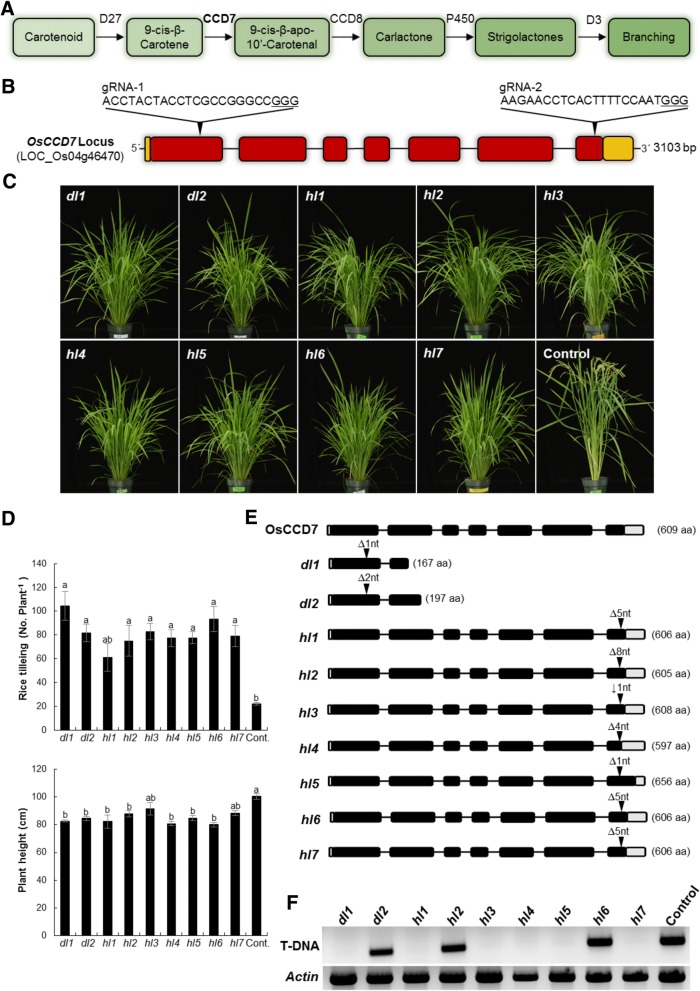Fig. 1.
OsCCD7 mutagenesis produced high-tillering and reduced height phenotypes: a Schematic of the strigolactone biosynthesis pathway showing branching/tillering inhibition activity. Carotenoid Cleavage Dioxygenase 7 (CCD7) catalyzes 9′-cis-β-carotene at the initial steps of SL biosynthesis. b Gene model of OsCCD7/ D17 (Dwarf 17)/ HTD1 (High-Tillering Dwarf1), also called MAX3 ortholog (LOC_Os04g46470). Two gRNA were used to target the OsCCD7 locus. gRNA-1 was designed to target the 1st exon to produce a mutation similar to d17. The nomenclature used for these mutant lines is dl (d17-like). Two T0 lines were produced, dl1 and dl2. gRNA-2 was designed to target the 7th exon. The mutant lines produced were similar to htd1 and these lines were named as hl (htd1-like). Seven independent lines were produced, hl1 to hl7. The underlined GGG represents PAM sequence. c and d High-tillering and lower plant height phenotypes were observed for mutant plants. Tillering and plant height per plant were recorded from four plants per line (n = 4). All of the genotypes showed significant increases in tillers per plant and decreased plant height compared to control. e T1 generation of mutants were genotyped and mono-allelic lines were identified. Each of these mutations produced a protein variant. The nucleotide indels and protein alignments are shown in Additional file 1: Figure S2 and S3 respectively. f Analysis of the T2 generation showed some of the mutant lines do not carry a T-DNA. T-DNA-specific PCR analysis indicated that dl1, hl1, hl3, hl4, hl5 and hl7 are non-transgenic mutated plants. Actin PCR was done as a control

